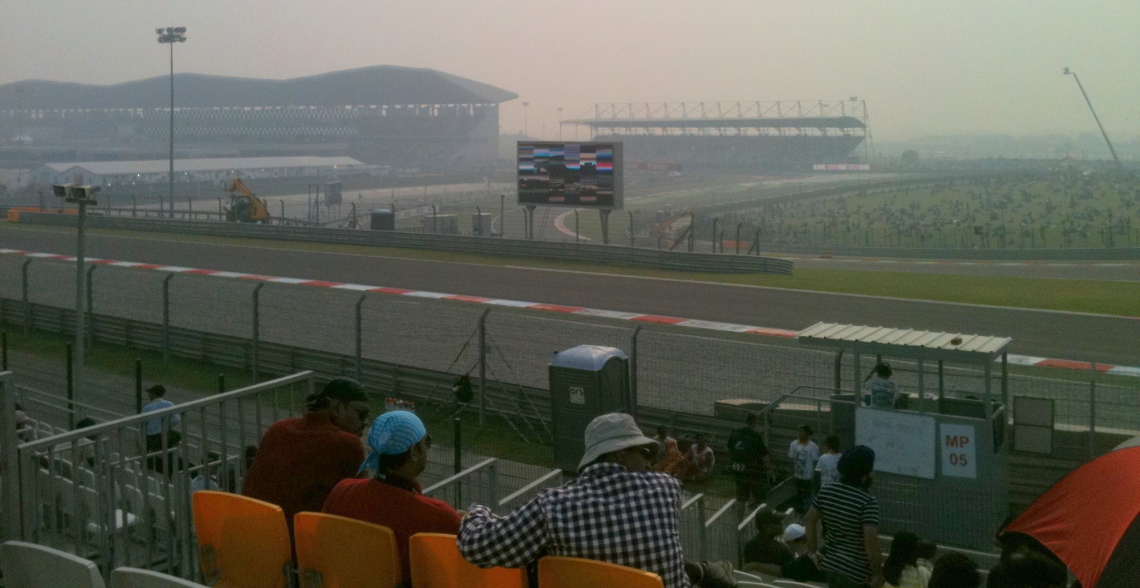The First Connection
The presence of the same political party was what connected Kerala with Kolkata while growing up, with many identical statements and news headlines covered in the morning dailies.
Years later, when I finally visited Kolkata for the first time, it came as a big surprise. The entire city looked so similar to my home state — the roads, or rather the condition of the roads, the political posters pasted all around, and even the overall geographical feel made me feel completely at home.
Many trips followed afterwards, mostly official. With every visit, I fell more in love with this lovely city. Like Kerala, known as God’s Own Country, Kolkata is called The City of Joy — and they truly lived up to that name. The people gave joy during every visit through their unconditional love, hospitality, and warmth. From the office boy to the manager, or even complete strangers outside, the affection remained the same — the same care, the same love — which still makes me nostalgic.
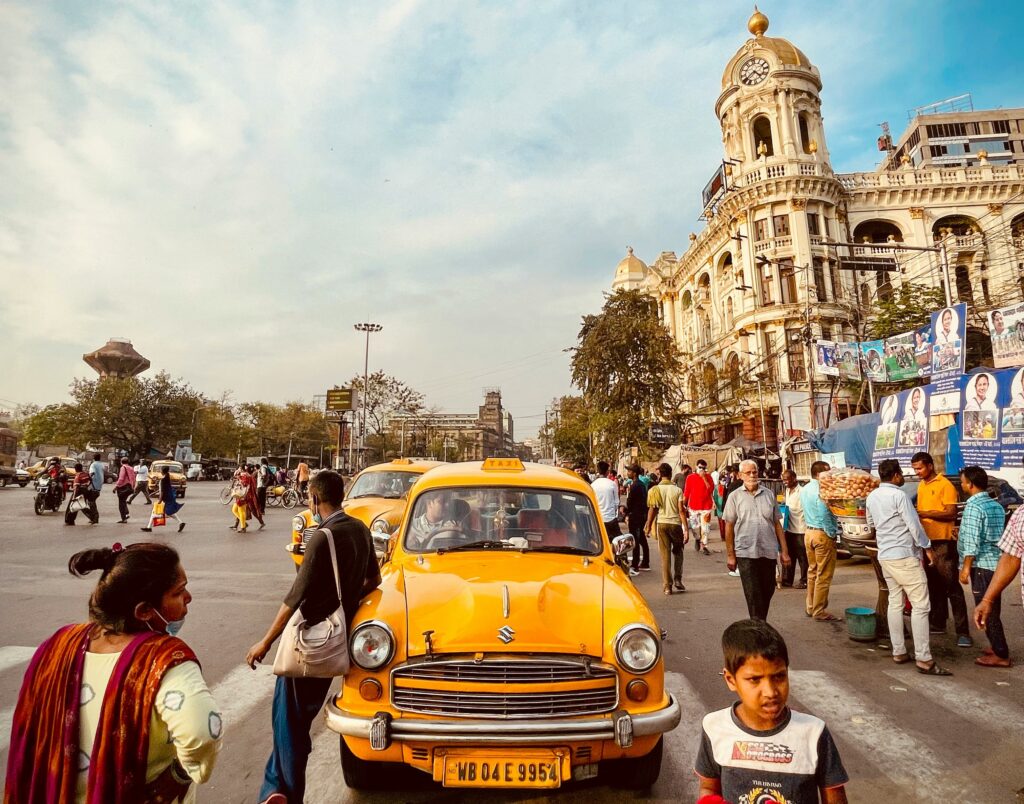
Many friends and old colleagues from there still make it a point to invite me during festivals or functions. Their friendship and attachment always place me somewhere in their list of preferences for weddings or Dussehra gatherings. And no wonder, during one of the loneliest and hardest phases of my life, it was a Bengali friend who entered my life — inspiring and motivating me with her words and unconditional care. That’s another story though.
A Morning at Kalighat Temple
During one of my official visits, I had a few weekends and holidays free — a perfect chance to explore the City of Joy without a planned sightseeing trip.
On a quiet weekend morning, I ventured out to visit one of the city’s most famous landmarks — the Kalighat Temple — the spiritual identity and heartbeat of Kolkata. Without this temple, Kolkata feels incomplete, almost like a non-existing entity. In fact, even the name “Kolkata”, derived from “Calcutta”, traces its roots to this very temple — “Kali” (the Devi) and “ghat” from ages ago.
It is also one of the 51 Shakti Peethas across India. For those who love mythology, this is where the toe of Sati Devi’s right foot is believed to have fallen when Lord Shiva carried her lifeless body. The 51 spots where her body parts fell became sacred Shakti Peethas — like Naina Devi in Nainital, the Devi temple in Kanyakumari, and Manikarnika Ghat in Varanasi.
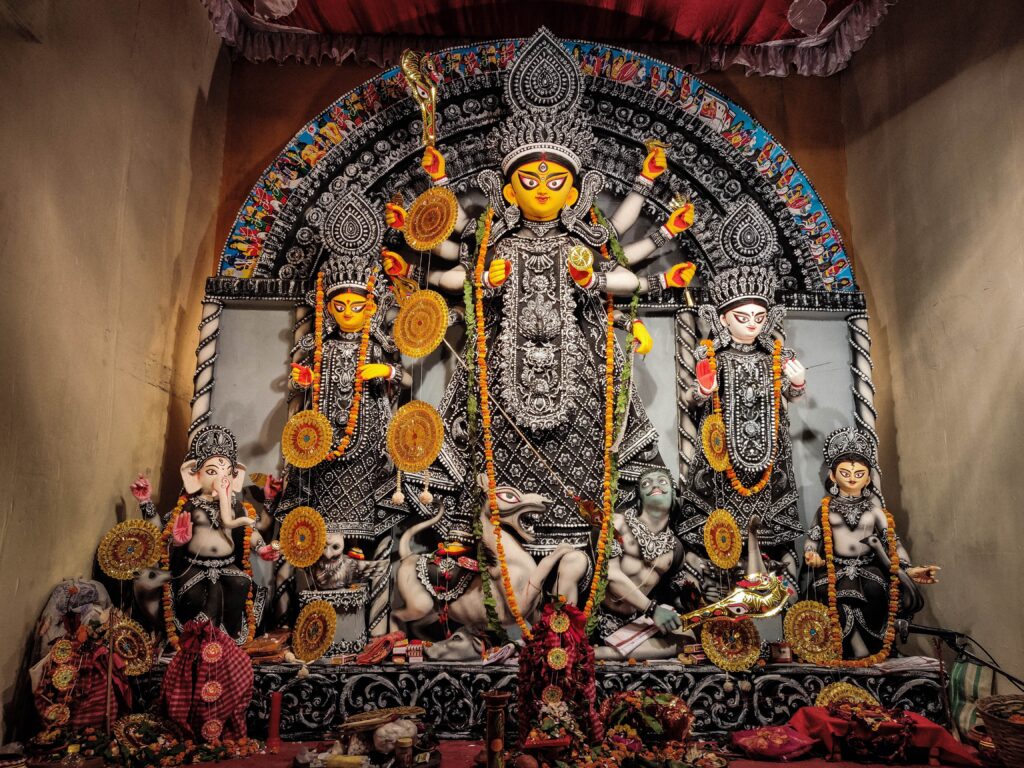
Early mornings are always the best time to visit a temple — less crowd, divine calmness, and an escape from the day’s heat. I set out in the early hours, taking a local taxi through lanes that again reminded me of my hometown. The temple was relatively less crowded — something rare, as I later learned.
The entire premises seemed to radiate a special divine energy. As I observed the surroundings, I could imagine the temple filled with millions of devotees during Dussehra and Navaratri.
The Middlemen at the Temple
The only disturbing part of the visit was the presence of dalals or middlemen. They were everywhere — from the place where we remove our slippers to deep inside the temple. Like expert marketing professionals, they offered help for everything — from buying pooja items, promising quick darshan, or arranging special blessings directly from priests.
It’s difficult to avoid them entirely, and as usual, I ended up paying ₹500 for all the help they offered. In the end, it did help me complete my darshan and rituals faster than many others still waiting in line.
Unlike many Durga and Kali temples back in Kerala, this temple had an aura that felt more like divine power mixed with fear rather than peaceful spirituality. It felt as though the Goddess tolerated no mistakes — a personal perception perhaps, but a strong one.
The intense atmosphere might be due to the idol itself — the red color of Sindoor everywhere, the fluid-red complexion of the deity, the wide-open three eyes, tongue out, and the hands holding swords and severed demon heads. It was powerful, fierce, and unforgettable.
With the help of the dalal, I could stand close to the deity and complete all the rituals. Though I don’t endorse such paid help, in a temple I might visit only once in a lifetime, I didn’t want to let principles come in the way of the experience.
Tea in Clay – The Taste of Kolkata
After the darshan, I decided to walk through the nearby lanes to soak in a bit of local life. It was still early, and the first thing I wanted was tea.
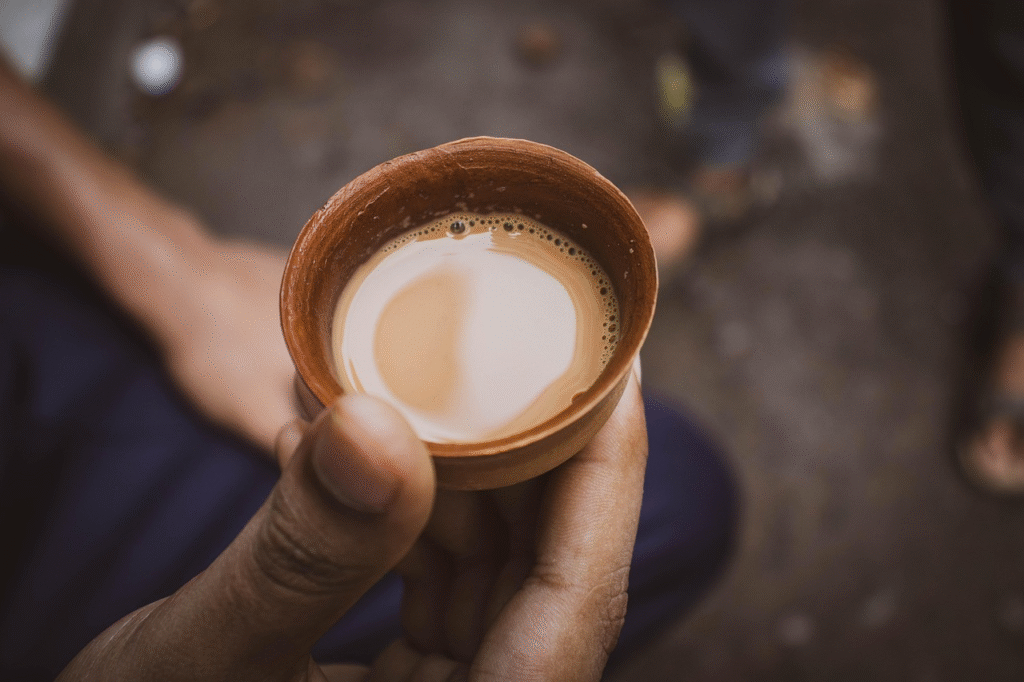
Street-side tea stalls were already open. Many elderly Bengalis in white kurtas were sitting around, reading newspapers, and sipping their morning tea. What fascinated me most was the bhaars — small clay cups used instead of glass, thrown away after a single use. The earthy flavor of hot tea in a clay cup was something truly special — simple yet unforgettable.
The Tram – A Moving Memory
A brief on Kolkata is never complete without mentioning its iconic Tram — probably the only city in India where it still runs.
How could I describe it? Perhaps like two buses joined together, gliding in the middle of the road. The rails are almost level with the street, barely noticeable. The trams move at a slow, unhurried pace, just like the rhythm of the city itself.

The first electric tram in Asia started here way back in 1902, and even in the 21st century, it still remains an integral part of Kolkata’s charm. There’s even a Tram Museum, Smaranika, built inside a renovated 1938 tram coach — showcasing memorabilia and relics from the early days. For those proud of their city metros today, it’s fair to say the tram was perhaps the inspiration behind them — my non-conclusive conclusion to wind up this nostalgic thought.
Belur Math – Where Faith Meets Peace
There was still enough time, and the mood was perfect for exploring more of Kolkata — something I had wanted to do for a long time. The next destinations were Belur Math and Dakshineswar Temple, located close to each other.
An hour’s drive from the city took me to Belur Math, situated on the banks of the Hooghly River — another name for the sacred Ganga.
It was difficult to categorize this place — a temple, a memorial, or a monastery — perhaps all in one. The architecture itself reflects unity among religions; the building looks different from various angles, appearing like a church, mosque, or temple depending on your viewpoint.
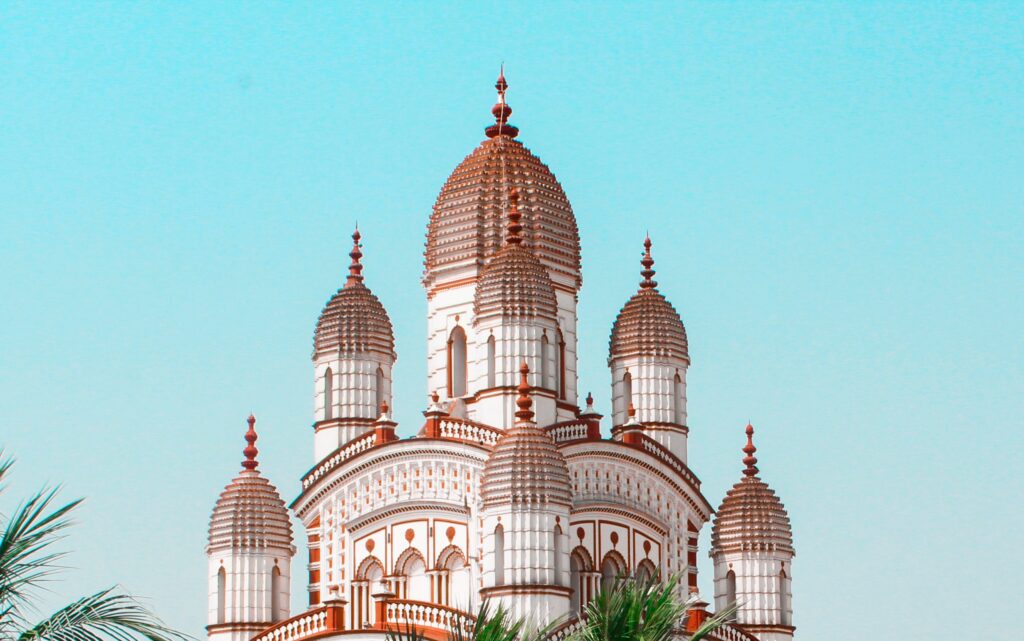
Belur Math is the headquarters of the Ramakrishna Mission, founded to promote unity among all religions. The serenity of the place is its biggest attraction. Even for non-believers, the calmness it offers feels special.
It was here that Swami Vivekananda spent his final days, and his mortal remains were cremated within the complex. The Vivekananda Temple stands there today. The place is also blessed by the presence of Sri Ramakrishna and Sarada Devi, whose temples are part of the complex.
Apart from the spiritual presence, Belur Math also houses schools, colleges, charitable institutions, and museums — all continuing the work and vision of Swami Vivekananda. The architecture alone is worth a visit, but what stays with you longer is the peace that surrounds the entire area.
Dakshineswar Temple – A Sacred Journey by the Ganga
Anything associated with the River Ganga is sacred for most Indians, and a boat ride across it is always special. But when that boat takes you from one spiritual place to another, it becomes divine.
The Dakshineswar Temple is located on the opposite bank of the Hooghly River, facing Belur Math. Most visitors choose to cross the river by boat, even at noon, just to experience the sacred waters.
This temple complex is massive — both architecturally and spiritually. The nine spires above the main temple, with one central dome and two sets of four smaller ones on either side, form a breathtaking sight from the river. The structure, painted in cream and brown hues, glows like gold in sunlight.
History traces its origin to the 1850s, when Rani Rashmoni dreamt of building a temple here instead of going all the way to Kashi for darshan. The main temple is dedicated to Goddess Kali, surrounded by twelve Shiva temples — six on each side of the ghat — each housing a different form of Shiva Linga. There’s also a Vishnu temple nearby, with idols of Krishna and Radha.
One of the most significant aspects of this temple is its association with Sri Ramakrishna Paramahamsa. He took over as the priest here after his brother’s death and spent most of his life within this temple complex, deeply immersed in spiritual practice and devotion to Maa Kali.
The small room where he lived and meditated is still open to visitors. Standing there, one can almost sense the presence of divinity and devotion that shaped his life’s work.
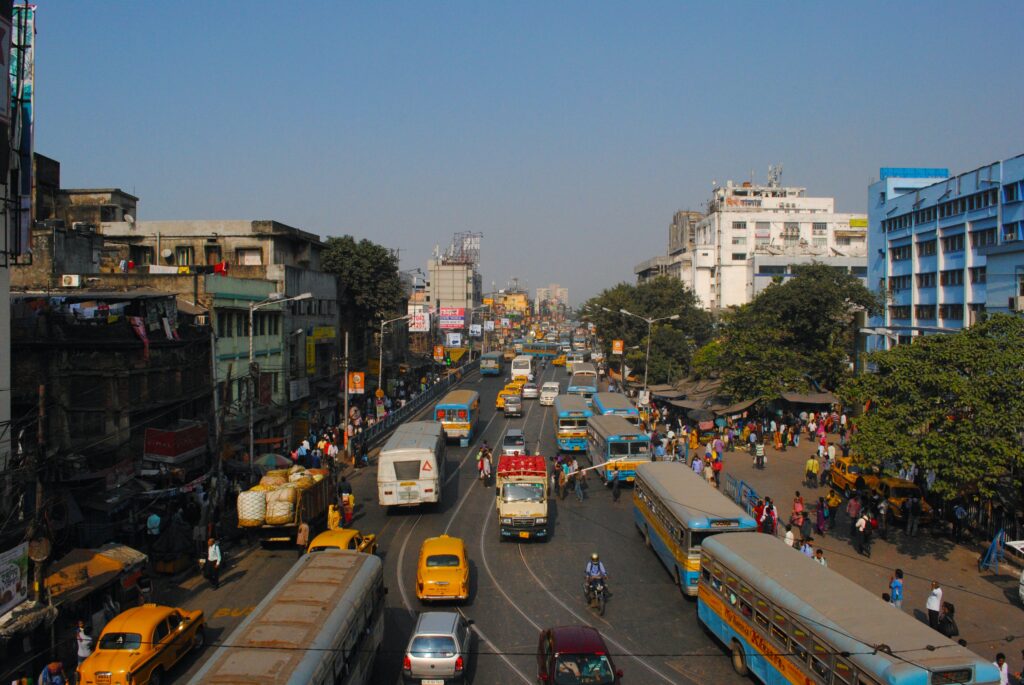
Epilogue
Kolkata, the City of Joy — it truly lives up to its name. Whether through its warmth, faith, culture, or compassion, the city embraces everyone who steps into it. For me, it was more than a travel destination — it was a place that made me feel at home, time and again


